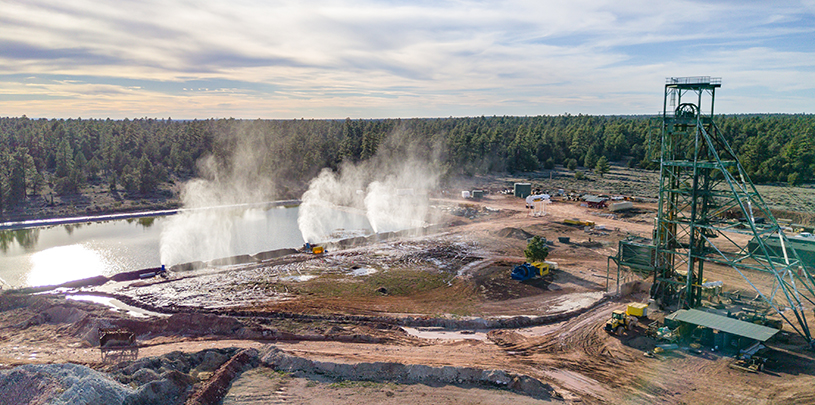
 by Aaron Paul, Staff Attorney
by Aaron Paul, Staff Attorney
Am I the only one who, while watching GameStop go bananas on the stock exchange, was reminded of how the 1872 Mining Law has been put to work for the Canyon uranium mine? Yes, indeed, I imagine I am. But I assure you, there’s some resemblance between all the call options recently placed on GameStop and the mine’s 40-year tenure on our public lands.
The general idea behind the 1872 Mining Law was to authorize what trespassing miners had already been doing for many years: going onto federal public lands to search for pay dirt. Under the law, a miner who found a “valuable mineral deposit” and followed a list of other rules could stake a mining claim and get the government’s blessing to mine.
Over a century later, in the late 1970s, a uranium-mining company used this law to stake two mining claims in a meadow in a national forest just south of the Grand Canyon. It named the site the Canyon Mine. And in the 40 years since, the claims have been bought and sold while their owners fenced off the meadow to keep you and me out, dug a very deep hole in the ground, and built out the hulking industrial ossature of a uranium mine.
Yet they have mined and sold no uranium ore. And that’s what makes me think of call options.
Thanks to the GameStop anomaly, I’ve learned from Investopedia that a call option is a contract that gives you the right to buy stock at a guaranteed price up to a particular date. So, if the stock skyrockets by the expiration date, you can buy at the contract’s lower “strike price,” sell at the market price, and make a tidy profit. But if the stock price falls or stays flat, you’re out the entire cost of the option contract. Calls let you take quite a gamble chasing a lucky strike.
You see where this is going. It seems to me that the Canyon Mine has used our public lands and the 1872 Mining Law sort of like a call option, wielding mining claims as a right to sit on public lands and wait to see if the price of uranium has a GameStop moment in the sun. Yet the deal for Canyon Mine is sweeter still, for the U.S. government so far seems content not to prescribe an expiration date on the option to mine.
You might think a miner’s four-decade encampment by the Grand Canyon is simply the product of our outdated federal mining law. But the story isn’t that simple. True enough, the law is a gnarled old statutory barnacle, but one point is clear: It was intended to forbid speculators from staking and holding mining claims while hoping for a future market boom. And so, the courts have decreed that mining claims are valid only when it’s reasonable to expect, based on present market conditions, that the mineral deposit claimed can be mined at a profit.
In loose terms, this is a piece of the story behind the lawsuit over Canyon Mine that we've been pressing in the federal courts, along with the Center for Biological Diversity and Sierra Club, for nearly eight years. After the Obama administration temporarily banned uranium mining around the Grand Canyon in 2012, the government took a look at whether the Canyon Mine claims were valid, asking whether the uranium there could be mined at a profit. We think the government’s analysis fell short by failing to count all mining costs, including many millions spent on the mine before 2012.
Zeroing out these very real expenses has worked in the mining company’s favor by driving down the paper mining costs, overstating the mine’s potential to turn a profit. This method of accounting is a bit like making up an artificially low “strike price” on the option to mine. We think that’s an odd (and unlawful) way to calculate a reasonable expected profit. After all, if you paid $5,000 for a car on Monday, and made a deal to sell it for $4,000 on Friday, you wouldn’t tell someone on Wednesday that you’d be making a profit just because the cost of buying the car is in the past.
If we get a favorable judgment, the government might finally require Canyon Mine to face a true reckoning with the uranium market. What then? It’s a bit difficult to say, except that, since it’s no longer 1872, a prospect that doesn’t pan out is a mess that the mining company, rather than the American taxpayer, is expected to clean up.
The Colorado River below Glen Canyon Dam is heating up. Find out why.
Read MoreGroundwater pumping at a uranium mine near the Grand Canyon will affect the canyon's springs, scientists says.
Read MoreArizona Governor Katie Hobbs is the latest elected official to call for an environmental review of Pinyon Plain uranium mine.
Read More